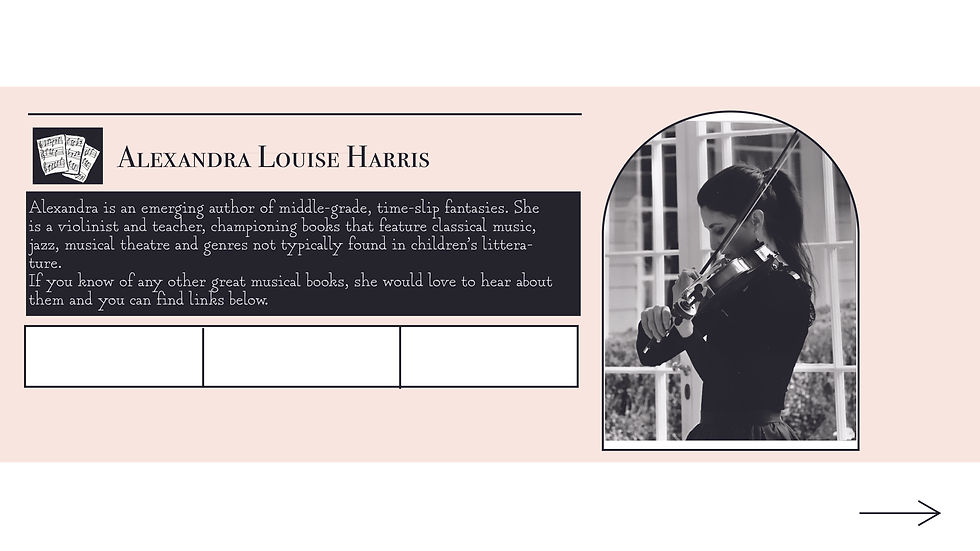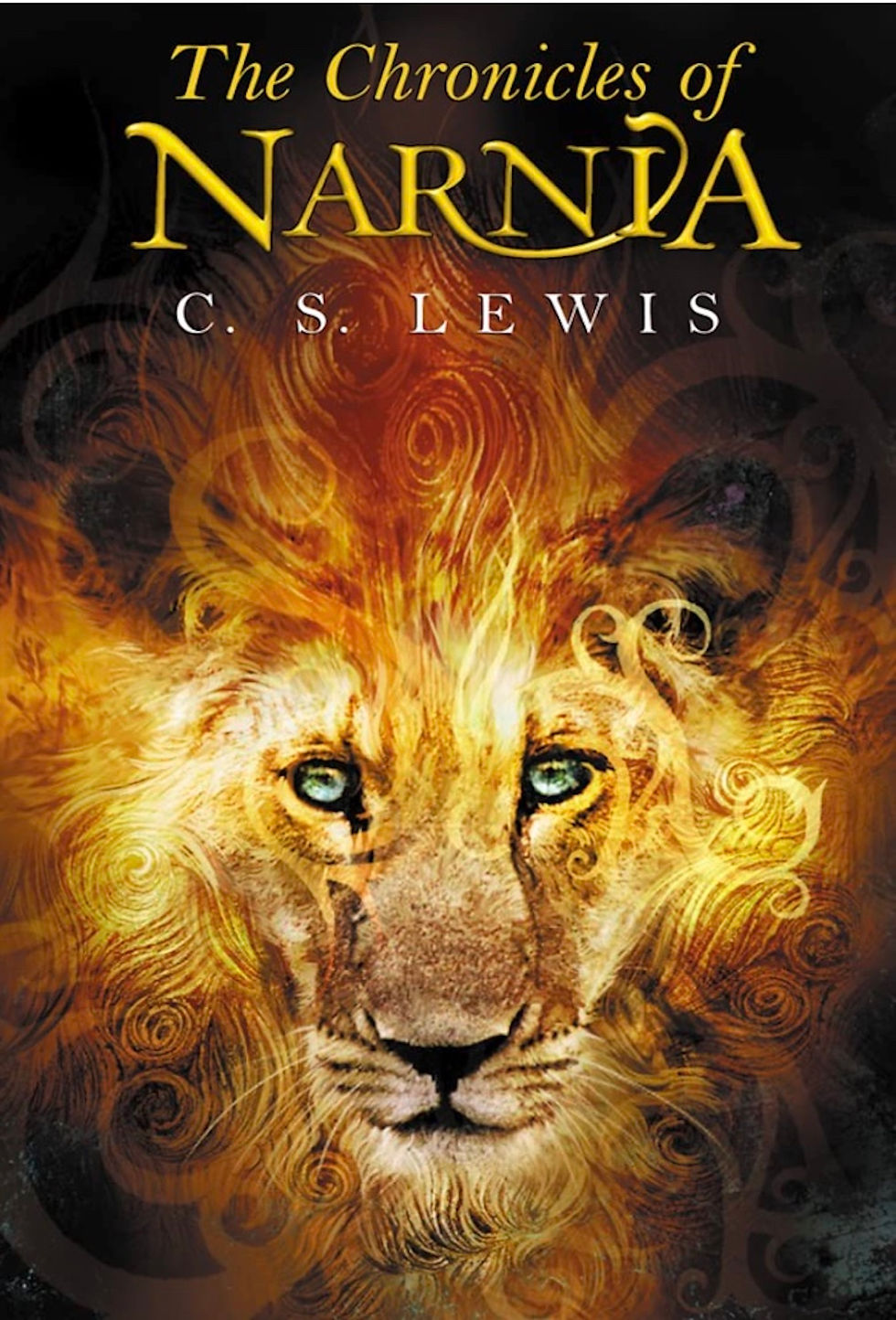The Land of Stories
- Alexandra Louise Harris

- Jul 20, 2022
- 4 min read
Updated: Mar 3, 2024
The first book in the Land of Stories is not officially a musical one… however, there is music in it. There's a symphony orchestra playing at a ball with Cinderella, and there is even a magical harp. I know! Exciting huh? Not only that, the harp talks, sings and happens to belong to the honourable Jack of the Beanstalk. Well, actually he's not quite so honourable as he stole it from the giant, but we won’t go there.

Anyway, as you may have gathered, there is an element of the fairytale in the Land of Stories. Ferdinand and I enjoyed it so much, not only for the reminiscences into our childhood, but also for the historical and fresh new takes on all these stories. It's also reminiscent of Narnia, and we love stories where one can escape into a wardrobe, a suitcase, a book, or even a piece of music. Therefore, if you enjoy fairytale kingdoms with a twist of Narnia, then The Land of Stories are the books for you. It also has the feeling of a time-slip, where modern day children end up in an old world where technology doesn’t exist, and everything mediaeval does. The resultant chaos creates a number of humorous situations and some very witty dialogue, great side-characters and even a fairy with ‘greyish-purple hair’ named Violetta.
Here is just example of one of our favourite lines, and you can probably tell why;
‘Are you sure I never traded you a magic flute for a chicken? Or perhaps a singing flower for a lamb?’
See? So fun... and musical! The best part is that this book is actually part of a series. There are six books and it’s even a television show, so I can’t wait to read more, but first, let's delve down into the book itself.
The story begins with twins Alex and Conor. They are given a book, long treasured by their father and grandmother, and unbeknownst to them, the tales are actually real! Right from the start, the author creates a depth and sympathy in the character of the twins, investing us in their lives and wishing them wondrous things.
When I read such wonderful books, my writer-self inevitably starts noticing things that stand out. I’m currently in the process of editing the second book in the Violetta series—Violetta and the Paganini Poltergeist—and I couldn’t help observing how well this novel is structured. That sounds terribly boring I’m sure, but there is quite an art to telling a good adventure story... and it’s not easy.
I’m constantly looking to learn from amazing writers, however, if you would prefer to skip this next portion, I don’t blame you at all. It’s not everyone’s cup of tea, nor is it up everyone’s alley, street, or even sidewalk; and if you’re still here, I’ll try not to be too boring about it. I may inadvertently included a few spoilers, so I do apologise, and can always just watch this video of Ferdinand on TikTok if you prefer.
Hi and thank you. I really was uncertain if you'd hang around. Now that you are though, I will try terribly hard not to waste your time. So here are my thoughts.
Firstly, there is the introduction to the normal world and the hint of something magical about to occur; then at chapter five, it does. This is at nineteen percent of the way through—and I do appreciate ebooks for being so precise! A whole lot of adventure happens, they gather a few allies and enemies, and as expected halfway through, the twins believe everything is lost. They are trapped for good!
However, this is where some even more clever story telling happens. The themes of the story are suddenly clearer. At the sixty-percent mark, the twins attempt to escape through a selfless and heroic act. They struggle with their conscience, then face-up to injustice by saying; ‘Looks to me like you busy yourselves with stupid little things so you feel like you’re doing something, when in reality you can’t handle what’s really going on out there.’
Next there is a sinister plot. At seventy percent all is almost lost again... but then a bigger mystery is presented. (I won’t give it away). There are more trials and tribulations, and an unexpected encounter with a villain. We learn; ‘Every driven person comes from a mountain of pain they wish to keep hidden.’ Grief and revenge play big parts in the story and they are told to ‘Be brave children. Courage is one thing that no one can ever take away from you.’
At eighty percent there is a lull before the final showdown. ‘The world will always choose convenience over reality… It’s easier to hate, blame and fear than it is to understand. No one wants the truth; they want entertainment.’ Injustice and persecution, betrayal, empathy, it’s all there and finally the children discover; ‘It doesn’t matter how greatly you’ve been hurt, or how much you’re hurting, it’s what you do with it that counts.’
The big reveal happens in the final ten percent. All the mysteries are summed up and we learn how fairytales give people hope, strength and courage. More importantly, they ‘put the sparkle back in the eyes of the children who were ill and had had their childhoods taken away from them.’
The home-away-home journey is complete, everyone is happy and even better; there is the hint that they are going to revisit the Land of Stories—good news for us!
Are you still there? Yay! I do hope you see the power in that narrative. It's pretty stirring stuff; and just in case you are thinking it's a little bit 'preachy' it doesn't come across that way at all, which is why it is all so clever.
If you do read this book—or see the television show—I'm sure you will enjoy as much as Ferdinand and I have... and if you are a writer, I'm certain you'll be blown away.
#middlegradebookreview #thelandofstories #creatingstoriesthroughmusic #violettabookseries #booksformiddlegradereaders #moderntakeonfairytalesforchildren #chriscolfer #booksformidddlegrade #bookreview #middlegradebookstructure #middelgradestructureannalysis #herosjourneyformiddlegrade #middlegradebookthemes #writingmiddlegrade





Comments